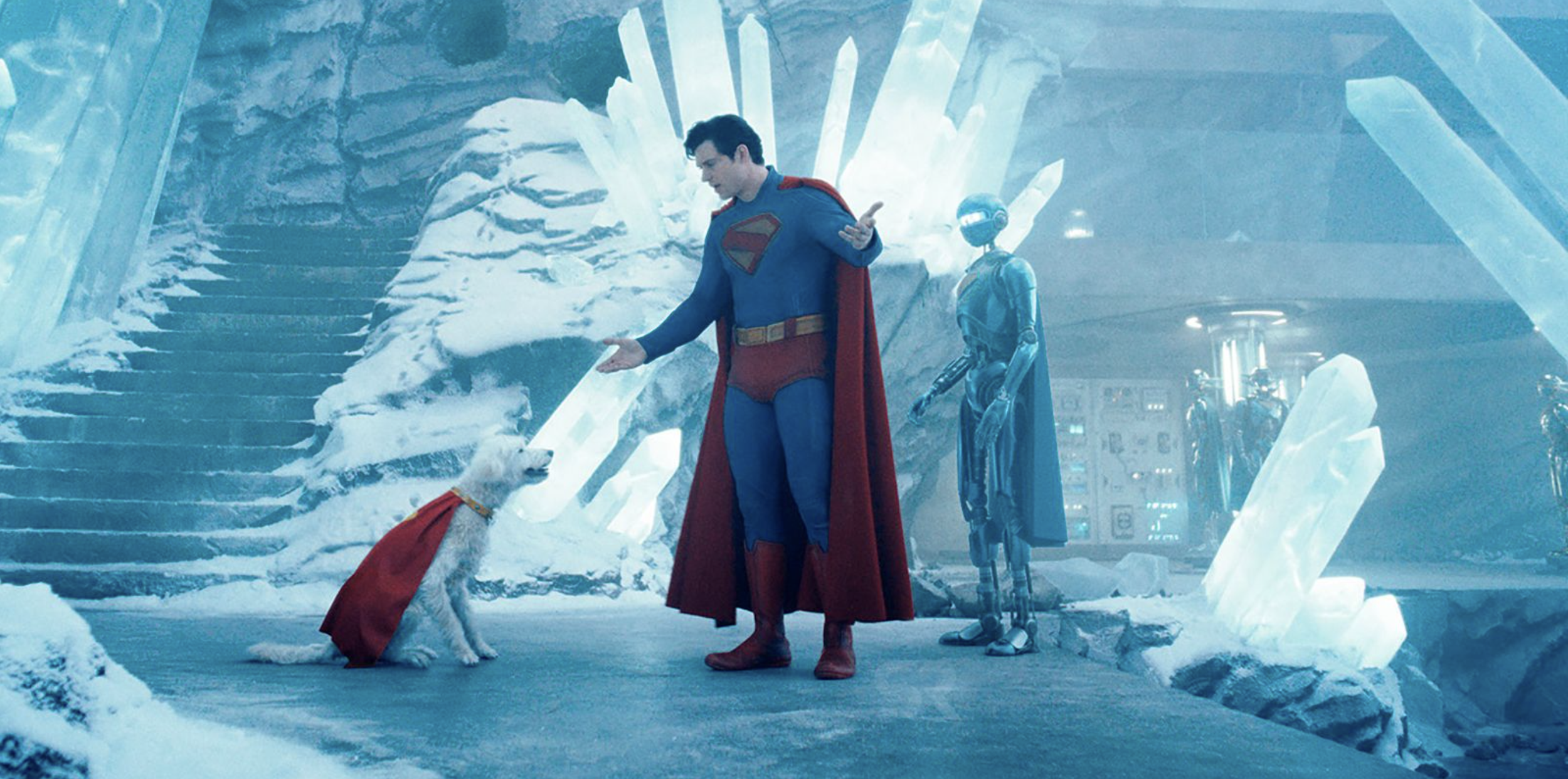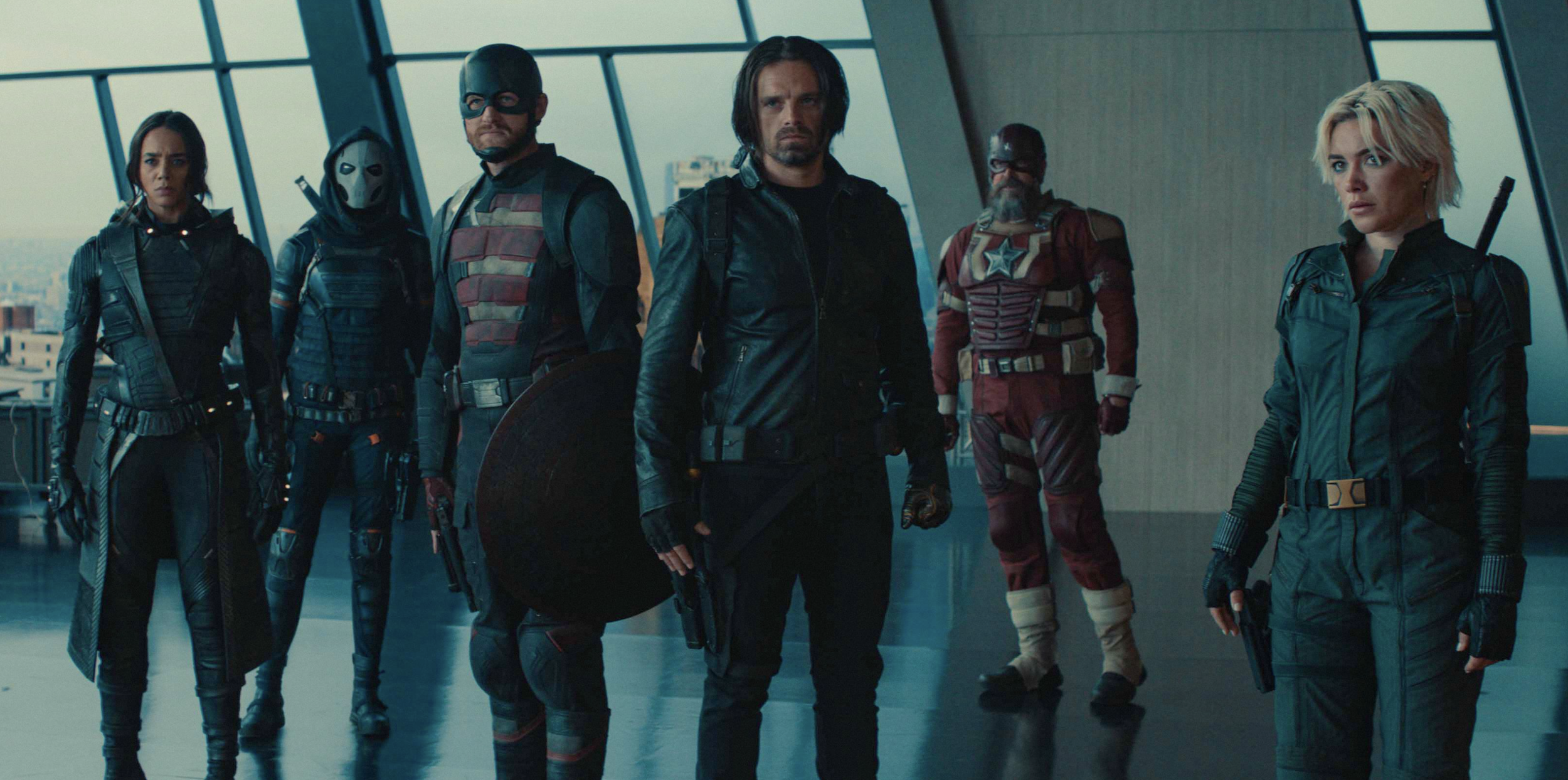SUPERMAN
Directing: C+
Acting: B
Writing: C
Cinematography: B-
Editing: C+
Special Effects: C+
About three quarters of the way through James Gunn’s Superman, I could no longer think of anything but this: Oh my god, this movie is dumb. But I am trying to lead with positivity!
There’s a few things I enjoyed about Superman, the seventh live action film with Superman as the top-billed character since 1978 (and I’m not even counting Batman v Superman: Dawn of Justice—because Batman got top billing). David Corenswet is well cast as the title character this time out, and when Gunn actually slows down long enough for us to get real character moments, the man is brimming with charisma and screen presence. He also has chemistry with Rachel Brosnahan (The Marvelous Mrs. Maisel), who works well as the scrappy reporter from the Daily Planet, because even in Gunn’s universe people apparently still care about journalism.
This many movies in—indeed, this many reboots in (I suppose this would make the third?)—it’s commendable that the story here doesn’t bother with Superman’s origin story. A series of opening titles inform us of the state of the world we are entering into, which includes “metahumans”—other people with superpowers, though Superman is the most powerful among them. I wasn’t crazy about yet another superhero movie with a supporting cast of second-tier superheroes, especially given that we never get any real chance to know “Mister Terrific” (Edi Gathegi), Green Lantern (Nathan Fillion), Hawkgirl (Isabela Merced), or Metamorpho (Anthony Carrigan) as characters. I understand these are all actual characters from DC Comics, but do we need to overstuff a 129-minute feature film with them? But! I did kind of love that, in this Superman movie, Lois Lane has full knowledge that Clark Kent is Superman, they are actively dating, and they even have some minor relationship problems. That is a refreshing change from how we usually see their relationship in these movies.
On the short list of things I actually liked about this movie, I have saved the best for last: Superman’s superdog, Krypto, gets extensive screen time. In fact, we meet him in the opening sequence, right after the title cards have informed us that Superman has just lost a battle for the first time. We already saw this in the very well-cut teaser trailer, in which Krypto drags Superman through the Antarctic snow back to his Fortress of Solitude. And I will say this to the dog lovers out there: if you love dogs, you are going to love Krypto.
Now, it should also be noted that Krypto is mostly an obvious CGI dog, something that is a bit of a pet peeve of mine. CGI doesn’t have to be obvious and it never has—Jurassic Park taught us that 32 years ago. You have the tools and you clearly have the budget. Maybe do it right? On the other hand, obvious or not, Krypto is adorable as hell, and possibly the best thing in Superman, which is otherwise far too busy and overstuffed, stupidly convoluted, and exhaustingly ridiculous, even by regular Superman standards.
Here’s where the casting wasn’t as inspired as I thought it was: Nicholas Hoult clearly wants to be an iconic villain as Lex Luthor, but, much like this film overall, he takes a giant swing—and then misses by a wide margin. This is hardly entirely Hoult’s fault, as he’s largely shackled by how bonkers-stupid James Gunn’s script is. Lex Luthor is supposed to be a mad genius, fine. But apparently this movie has to up the ante on that idea to such a degree that Luthor has managed to invent a means for traveling in and out of a “pocket universe” of his own creation. What? If I never hear that phrase again it'll be too soon. This level of idiocy leaves me feeling deeply wistful for the days of Gene Hackman, whose Lex Luthor had a delicious understanding of sarcasm and wit. Nicholas Hoult’s Lex Luthor only understands cartoonish obsession.
I hate to give a piece of shit like Kevin Spacey any credit, but he was the only other Lex Luthor to come close to the spirit of Gene Hackman, when he appeared as the character in Superman Returns in 2006. That film remains the only halfway decent Superman movie since the first two Christopher Reeve films, and that one was released 19 years ago. In my review of that film, I wrote about the awkward challenge of marrying Superman’s old-school wholesome sensibility with the cynical sensibility of the 21st Century. In this new Superman, Gunn tries hard to update these characters for the current era, but sometimes it just doesn’t work. This film is rated PG-13, probably exclusively because of how frequently characters are swearing, but in a DC universe dominated by Superman, they just come across like people swearing to sound cool, which of course falls flat.
I wish I could say that at least this Superman is better than Zack Snyder’s 2016 film Man of Steel, but alas, it is not. These films just have different reasons for being cinematic beacons of big-budget mediocrity. James Gunn makes an attempt at infusing his film with some gravitas, even going so far as designing the credits in the style of those from the Richard Donner films. All this does is remind us how much better those films are—they are now very dated, to be sure, but they still manage to capture a sense of wonder that modern superhero films, and certainly those based on DC comics, lack. The Superman we get in 2025 falls victim to the same claptrap nine out of ten other superhero movies do, sagging under the weight of their own bloat, and throwing in stakes so ridiculous as to become meaningless. Other movies feature sequences wherein the villains threaten the existence of either the entire city or the entire universe—here, we get a “dimensional tear” that threatens both at once! And Lex Luthror is such an evil genius he can stop or start it with a bank of computers!
Why do filmmakers think they can improve overplayed iconic character stories by making them pointlessly convoluted with what amounts to magical nonsense? I’d love to see a new Superman that is simple but clever, inspired but straightforward. Or, I could just go watch the Richard Donner films again. The tagline for the 1978 film, which ushered in the superhero blockbuster era, was You’ll believe a man can fly. Nearly five decades later, we’ve seen so many men fly that our eyes have glazed over. The tagline for this new film might as well have been You won’t believe a man can revive a franchise.
One of the few memorable quotes in this Superman is when a guy on the news says, “The one thing liberals and conservatives can agree on is that Lex Luthor sucks.” I wish I could say that we can all agree that this Superman sucks, but conservatives are already priming liberals to defend it. And to be fair, “sucks” is a bit strong of a word. I suppose I could try to be like the cool kids these days and just say that James Gunn’s Superman is “mid.” It’s only David Corenswet, Rachel Brosnahan, and Krypto that even raise it to that level.
If there is any reason to see Superman it’s Krypto the superdog. And I still don’t particularly recommend it.
Overall: C+










